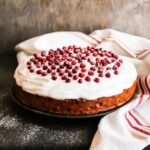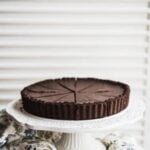Are you looking to learn how to decorate a cake with a piping bag? Using a piping bag can take your cake decorating skills to the next level, allowing you to create intricate designs and beautiful details that will impress your friends and family. In this article, we will explore the basics of cake decorating with a piping bag, from gathering the necessary tools and ingredients to troubleshooting common issues and even diving into advanced techniques.
Before you can start decorating your cake with a piping bag, it’s important to understand the fundamentals of using this versatile tool. Whether you’re a beginner or an experienced baker looking to refine your skills, mastering the art of piping can open up a world of creative possibilities in the kitchen.
In the following sections, we will cover everything you need to know about using a piping bag for cake decoration. From choosing the right piping tips for different designs and textures to learning techniques for filling, holding, and achieving the perfect piping consistency, we’ve got you covered. So grab your apron and let’s get started on this delicious journey into the world of cake decorating.
Gathering the Necessary Tools and Ingredients for Cake Decorating
When it comes to decorating a cake with a piping bag, having the right tools and ingredients is crucial for success. Here are some essential items you’ll need to gather before you start decorating:
Piping Bag
The most important tool for cake decorating, a piping bag allows you to control the flow of frosting and create various designs on your cake. Disposable and reusable options are available, so choose one that best suits your needs.
Piping Tips
Different tips create different designs, so it’s important to have a variety of tips on hand. Round tips are great for writing and creating outlines, while star tips can be used for borders and flowers. Leaf tips are perfect for creating foliage or adding texture to your designs.
Frosting or Icing
Whether you prefer buttercream, royal icing, or fondant, make sure you have enough to cover and decorate your cake. You can use store-bought or homemade frosting, depending on your preference.
Food Coloring
If you want to add color to your designs, having a set of food coloring gels or liquids is essential. This will allow you to create vibrant designs and customize the look of your cake.
Cake Turntable
While not absolutely necessary, a turntable can make the decorating process much easier. It allows you to smoothly rotate the cake as you decorate, ensuring even coverage and consistent designs.
By gathering these essential tools and ingredients, you’ll be well-prepared to embark on your cake decorating journey with a piping bag. In the next section, we’ll explore how to prepare the cake for decoration and ensure a smooth canvas for your creativity.
Preparing the Cake for Decoration
When it comes to cake decorating, the foundation is key. Properly preparing your cake for decoration can make a big difference in the final result. Here are the steps to ensure your cake is ready for the piping bag:
1. Leveling: Before you start decorating, it’s important to ensure that your cake layers are level. Use a long serrated knife or a cake leveler to trim off any domed tops and create an even surface for decorating.
2. Crumb coating: To prevent crumbs from mixing into your final layer of frosting, apply a thin layer of frosting all over the cake. This acts as a “glue” to hold in any loose crumbs and creates a smooth base for the final layer of frosting.
3. Chilling: Once the crumb coat is applied, it’s essential to chill the cake in the refrigerator for at least 30 minutes. Chilling helps set the frosting and makes it easier to work with when using a piping bag.
By following these steps, you’ll have a perfectly prepared canvas for your piping bag decorations. Taking the time to properly level, crumb coat, and chill your cake will make a noticeable difference in the professional appearance of your decorated cakes.
Choosing the Right Piping Tips for Different Designs and Textures
When it comes to decorating a cake with a piping bag, choosing the right piping tips is crucial for creating different designs and textures. Here are some essential tips and recommendations for selecting the right piping tips:
- Round Piping Tips: These are perfect for creating outlines, writing, and detailed decorations on cakes.
- Star Piping Tips: Ideal for creating rosettes, swirls, stars, and shells. They add texture and dimension to the cake’s surface.
- Open Star Piping Tips: Similar to star tips but with openings in the center. They are great for making larger rosettes and borders.
- Ruffle Piping Tips: These tips are used to create ruffles and waves on cakes, adding an elegant touch to the overall design.
- French Piping Tips: These specialized tips create intricate floral designs such as roses, tulips, and sunflowers. They add a beautiful decorative element to any cake.
It’s important to have an assortment of piping tips in different sizes and shapes to achieve a variety of decorations. Experimenting with different tips will allow you to discover new designs and techniques that can enhance your cake decorating skills.
Remember that the size of the piping tip will also affect the texture of the frosting. Smaller tips create finer details while larger tips produce bolder textures. By mixing and matching different piping tips, you can create unique designs that will make your decorated cakes stand out.
Lastly, don’t be afraid to try out new piping tips and experiment with various combinations. With practice and creativity, you’ll be able to master the art of using piping tips to decorate stunning cakes that will impress your friends and family.
Techniques for Using a Piping Bag
Using a piping bag to decorate a cake can seem daunting at first, but with the right techniques, it can elevate your baked creations to a professional level. Understanding how to properly fill, hold, and achieve the right piping consistency is crucial for successful cake decorating.
When it comes to filling a piping bag, the correct method can make all the difference. Start by placing the piping tip in the bag and trimming the end if necessary. Then, fold back the top of the bag to form a cuff and fill it with frosting no more than halfway full. Unfold the cuff and twist the top of the bag to secure the frosting before applying pressure while decorating.
In terms of holding the piping bag, remember that less is more. Gripping the bag too tightly can lead to hand fatigue and imprecise decorating. Hold the bag like you would hold a pen or pencil, ensuring a steady and controlled movement while piping frosting onto your cake. It’s also important to maintain consistent pressure on the bag for an even flow of frosting.
Piping consistency refers to the texture and thickness of your frosting, which can vary depending on your desired design. For intricate details, use stiffer icing, while softer icing works best for smooth finishes. Achieving proper piping consistency involves adding small amounts of liquid or powdered sugar as needed until you reach your desired texture.
| Piping Bag Technique | Tips |
|---|---|
| Filling | Fill no more than halfway; twist top securely |
| Holding | Hold like a pen or pencil; maintain consistent pressure |
| Piping Consistency | Adjust texture with small amounts of liquid or powdered sugar |
Step-by-Step Guide to Decorating a Cake With a Piping Bag
The step-by-step guide to decorating a cake with a piping bag is an essential part of cake decorating. Once you have gathered the necessary tools and ingredients and prepared your cake for decoration, it’s time to get creative with your piping bag. Creating borders, flowers, and writing are some of the key techniques that can elevate your cake from ordinary to extraordinary.
When creating borders on your cake with a piping bag, it’s important to choose the right piping tip for the design you have in mind. A round tip is commonly used for creating simple borders, while a star-shaped tip can give a more textured and decorative border. To create a smooth and even border, hold the piping bag at a 90-degree angle to the surface of the cake and apply consistent pressure as you pipe.
For adding flowers to your cake, using a petal tip can help achieve realistic floral designs. Start by piping a small dollop of frosting in the center of where you want the flower to be, then carefully pipe petals around it in a circular motion. With practice, you can create beautiful and intricate floral patterns on your cakes.
Writing messages or names on cakes with a piping bag requires steady hands and good control of the flow of frosting. It’s helpful to practice on parchment paper before attempting to write directly on the cake. Using an appropriate round tip for writing will also make it easier to achieve clean and legible lettering.
| Piping Technique | Example Piping Tip |
|---|---|
| Borders | Round or star-shaped tip |
| Flowers | Petal tip |
| Writing | Round tip |
Troubleshooting Common Issues With Piping Bags and How to Fix Them
Uneven or Inconsistent Piping
One common issue that many cake decorators face when using a piping bag is the uneven or inconsistent piping of frosting. This can be caused by a few different factors, such as air bubbles in the frosting, improper consistency of the frosting, or an improper grip on the piping bag.
To fix this issue, start by ensuring that your frosting is at the proper consistency – not too thick and not too runny. You can also gently tap the filled piping bag on the counter to help release any air bubbles before you begin piping.
Frosting Leaking From the Coupler or Tip
Another frustrating problem that may arise when using a piping bag is frosting leaking from the coupler or tip. This can make it difficult to control the flow of frosting and create clean, defined designs on your cake.
To address this issue, check to make sure that all parts of your piping bag are tightly secured – from the coupler to the tip. If frosting continues to leak, it may be helpful to switch to a new, tightly secured coupler and tip.
Difficulty Controlling Pressure and Consistency
Some decorators may find it challenging to control the pressure and consistency of frosting as they pipe onto their cake. This can result in designs that lack precision and definition. To improve your control, practice varying levels of pressure on a test surface before decorating your cake. Additionally, ensure that your grip on the piping bag allows for smooth and consistent movement while applying pressure. Making these adjustments can help you achieve more professional-looking designs on your cakes.
By addressing these common issues with piping bags and implementing these troubleshooting tips, cake decorators can elevate their skills and achieve beautiful, professional-looking designs on their cakes.
Advanced Cake Decorating With Piping Bags
To achieve multi-colored frosting, decorators can use a technique called “striping” the piping bags. This involves painting lines of different colored food gel inside the piping bag before filling it with frosting.
As the decorator pipes the frosting onto the cake, the colors blend together and create a beautiful gradient effect. Another method for achieving multi-colored frosting is by using multiple piping bags filled with different colored frostings and attaching them to a single tip to create a swirl of colors.
In addition to multi-colored frosting, decorators can also create intricate designs such as lace patterns, elaborate flowers, or geometric shapes using piping bags. By utilizing different piping tips and varying the pressure while piping, decorators can add depth and texture to their designs. Practice and patience are key when it comes to advanced cake decorating with piping bags, but with time and dedication, decorators can elevate their skills to create show-stopping cakes for any occasion.
Conclusion
As you continue to develop your cake decorating skills using a piping bag, it’s important to remember that practice makes perfect. One of the best tips for perfecting your skills is to not be afraid to make mistakes. Every mistake is an opportunity to learn and improve. Be patient with yourself and keep practicing on different types of cakes to see how the frosting behaves under different conditions.
Another tip for practicing and perfecting your piping bag skills is to seek inspiration from various sources. Whether it’s watching tutorial videos, attending cake decorating classes, or studying cake decorating books, there are many ways to gain new ideas and techniques. Additionally, don’t hesitate to experiment with different piping tips, frosting consistencies, and color combinations to create unique designs.
Lastly, remember that cake decorating with a piping bag is an art form that requires time and dedication. Don’t get discouraged if your first few attempts don’t turn out as expected. Keep refining your techniques, learning from your mistakes, and most importantly, have fun expressing your creativity through cake decoration.
Additional Resources and Inspiration for Cake Decorating With a Piping Bag
In conclusion, decorating a cake with a piping bag can seem daunting at first, but with the right tools, techniques, and practice, it can be a truly rewarding skill to master. By gathering the necessary tools and ingredients, preparing the cake for decoration, and choosing the right piping tips for different designs, you can create beautiful and professional-looking cakes right at home.
Remember to always focus on getting the right consistency in your frosting and holding the piping bag correctly to achieve better control and precision in your designs. And don’t get discouraged by common issues such as clogging or inconsistent piping – there are simple solutions to troubleshoot these problems and continue with your cake decorating process.
As you become more confident in using a piping bag for cake decorating, you can also explore advanced techniques such as creating intricate designs and using multi-colored frosting for stunning visual effects. With enough practice and patience, you’ll be able to take your cake decorating skills to the next level and impress your friends and family with your beautifully embellished cakes.
Keep practicing and experimenting with different designs to further perfect your skills in cake decorating with a piping bag. The more you practice, the more creative and skilled you’ll become in this craft.
Frequently Asked Questions
What Are the Best Piping Tips for Cake Decorating?
The best piping tips for cake decorating are typically the open star tip, closed star tip, round tip, and petal tip. These tips allow for different designs such as rosettes, stars, dots, swirls, and more.
The sizes of the tips can also vary to create different effects on the cake. It’s important to have a variety of piping tips in your collection to give you options when decorating cakes.
How Do You Decorate a Cake With Piping Bag and Tips?
Decorating a cake with a piping bag and tips involves first preparing the frosting or icing of your choice and placing it into the piping bag fitted with the desired tip. Once the bag is filled, you can start piping designs onto the cake by applying even pressure to the bag while holding it at a slight angle.
Different techniques such as rosettes, borders, writing, flowers, and other decorative elements can be achieved with practice using various piping tips.
What Is the Easiest Way to Put Frosting in a Piping Bag?
The easiest way to put frosting in a piping bag is to use a spatula or spoon to scoop the frosting into the open end of the bag. Alternatively, you can place an empty bag in a tall glass with the top folded over the edges of the glass to hold it open while you fill it with frosting using a spoon or spatula.
This method helps keep things neat and minimizes mess when filling the bag with frosting or icing.

Welcome to my blog about home and family. This blog is a place where I will share my thoughts, ideas, and experiences related to these important topics. I am a stay-at-home mom with two young children. I hope you enjoy reading it! and may find some helpful tips and ideas that will make your home and family life even better!





